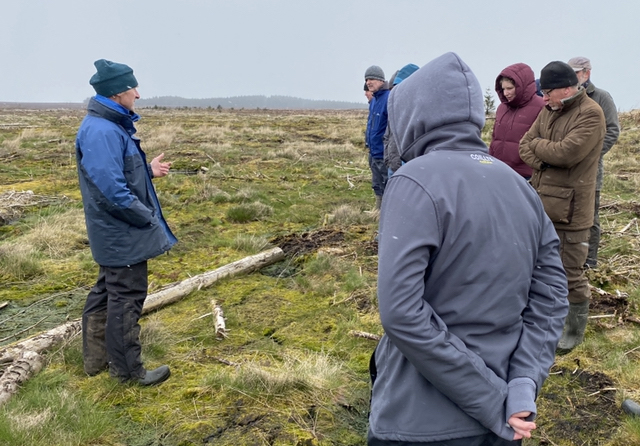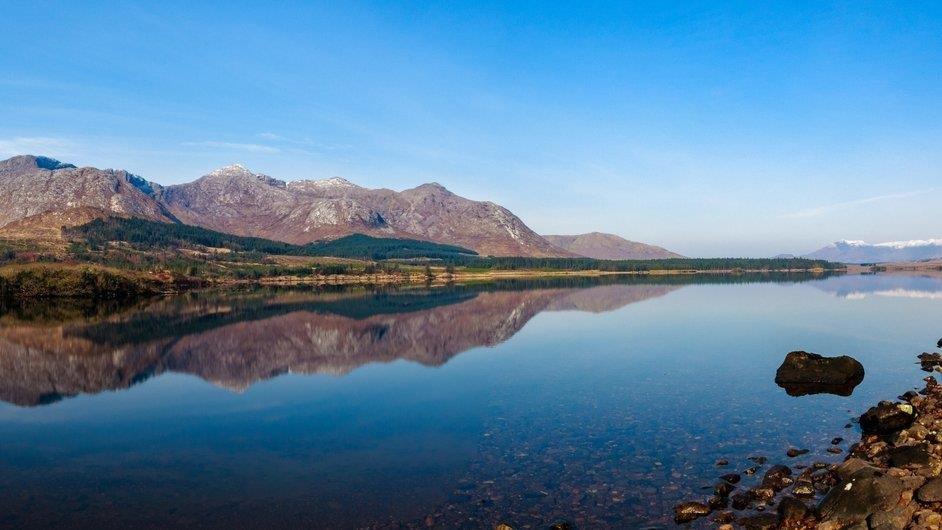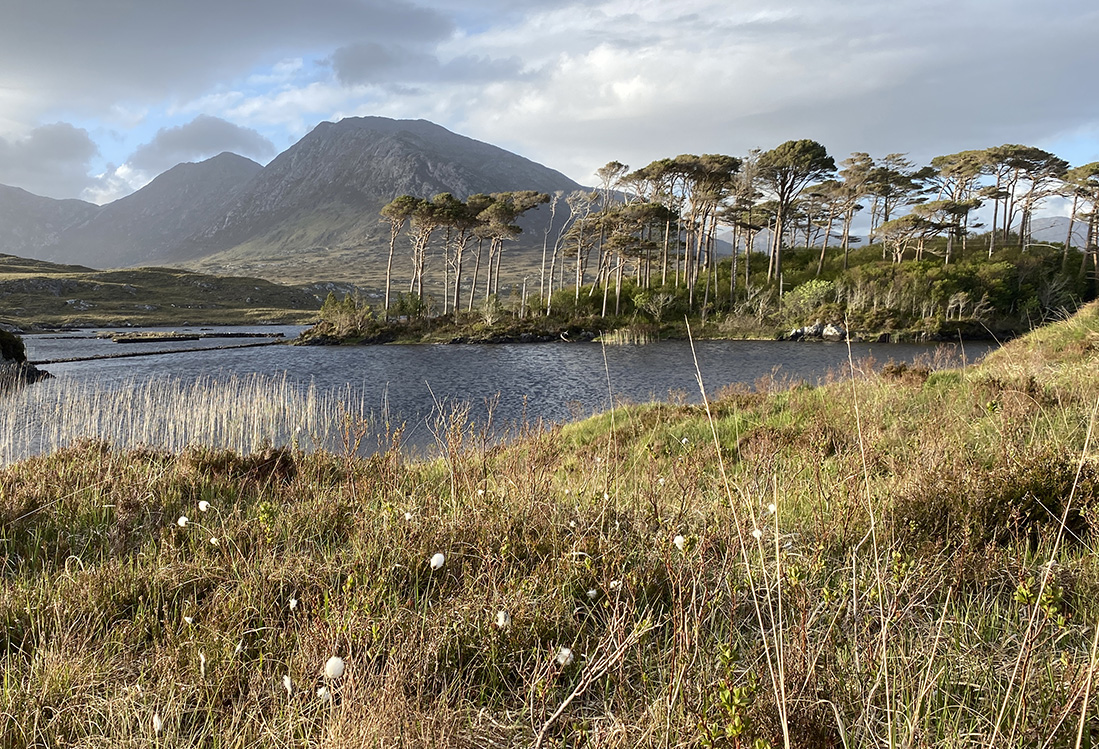Knowledge-sharing visit to CAFRE Hill Farm
In late March, the Coillte Nature team went on a research and knowledge-sharing visit to CAFRE Hill Farm in Co. Antrim. This is a really fantastic resource, one of several campuses for the College of Agriculture, Food and Rural Enterprise, at Glenwherry, about a 20 minute drive north of Belfast city. Our reason to visit was to learn more about their blanket bog restoration project, in particular an area of 57 hectares (141 acres) that is being converted from productive forestry (lodgepole pine and Sitka spruce) back to blanket bog. This is being assessed by a team led by Senior Technologist Bryan Irvine, and communicated to the surrounding community, in regards to food production, biodiversity, carbon, water and access.
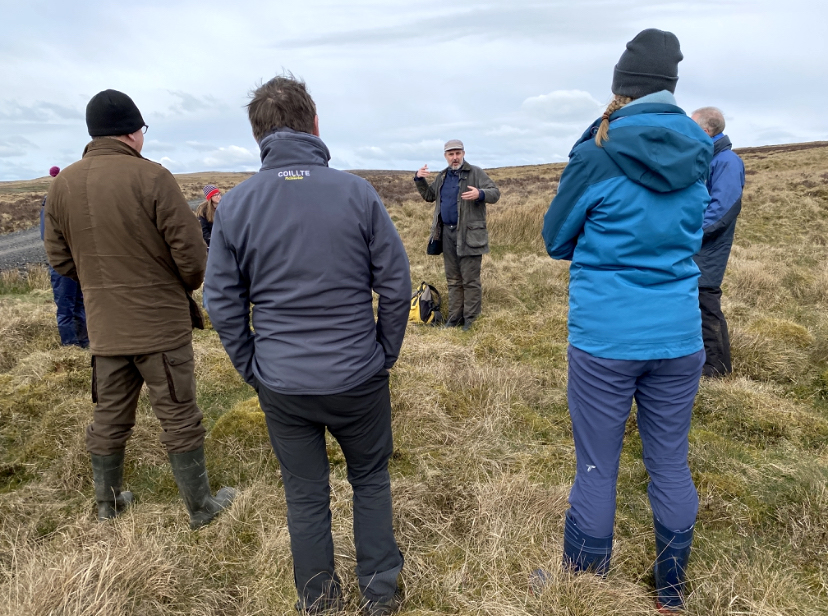
The primary motivation for this project is to increase biodiversity, with this area being part of a Special Protection Area (SPA) for hen harrier and merlin, as well as a valuable habitat for ground nesting birds such as grouse, lapwing, curlew and snipe. As Bryan explained to us, a relatively small area of forest in a habitat like this can introduce a ‘predator effect’ for a much wider area around it as it gives a stronghold for natural predators such as foxes, crows and stoats, which will impact on the population of endangered birds using the surrounding area.
We were lucky enough to spot two grouse, lapwing and also hear some noisy geese that were overwintering there. CAFRE Hill Farm collaborates in a partnership with the Irish Grouse Conservation Trust, the Royal Society for the Protection of Birds (RSPB), the Northern Ireland Raptor Study Group (NIRSG), the Northern Ireland Environment Agency (NIEA), and the Agri-Food Biosciences Institute (AFBI).
Besides these biodiversity benefits, there is research being carried out also on the impacts that such a blanket-bog restoration project can have on water and carbon. Dr Ray Flynn from Queen’s University Belfast accompanied us and gave an excellent overview of the studies that are being carried out in regards to drinking water quality, flow and storage at this site. Auto-samplers (pictured) collect water samples from streams flowing through the site, which are measured for a range of qualities, focusing on dissolved organic carbon (rather than the release of phosphorus). If you have ever seen brownish water flowing from a stream in rural Ireland, this is most likely what you are seeing, and the colour of the water can indicate how much peat or other material is dissolved in the water. This site is of particular interest to NI Water as it is in the catchment area for the drinking water reservoir that serves the surrounding community. This water is treated before being supplied to homes, and obviously the cleaner the water is when it arrives at the plant, the less energy, treatment and, of course, money is needed to clean this water. This is one very straightforward way of seeing significant financial benefits of restoring blanket bog.
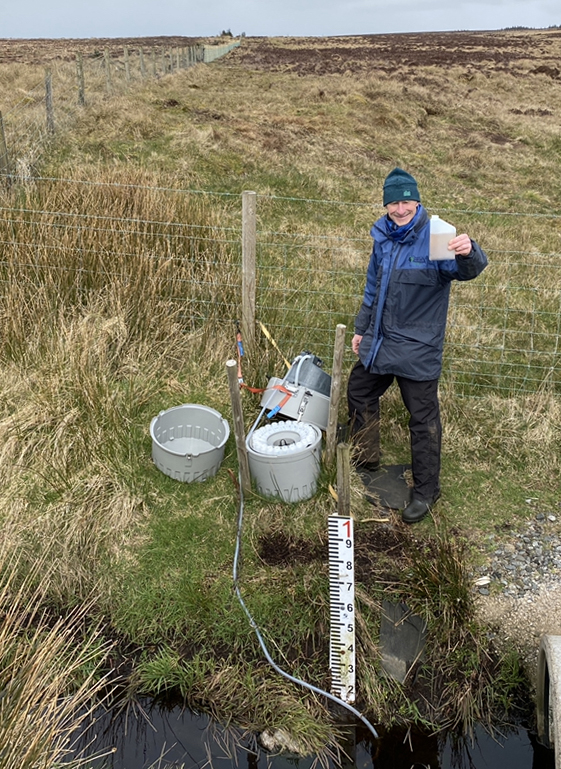
Monitoring of greenhouse gasses is also being carried out at this site using a carbon flux monitor - a piece of kit that cost about £300,000 - as well as portable devices for measuring at specific locations
On a March day that was cold enough that it was snowing at that elevation, we saw for ourselves some of the blanket bog restoration techniques that are being used, and the results after various periods. The area we visited is deep blanket peat over 3 metres deep on a relatively flat site (up to 3% slope) although there are some steeper parts (up to 8% slope) where restoration was carried out this February. The forest had been felled using standard forestry practices, with stumps and branches left on site. Bryan explained that some of this timber came in handy and they used it to block drains. Another technique they used is called ‘stump-flipping’ and this is where a digger extracts the tree stumps one at a time, turns them over and buries them under the peat. This, together with ‘ground smoothing’ (levelling of the ground so that all areas can rewet equally, rather than leaving the elevated drier furrows) leaves the peat quite bare, but encourages rapid colonisation by water-loving mosses and other ground vegetation. This also resulted in successful raising of the water table to within 10-15cm of the surface, which is necessary for bog vegetation to recolonise.
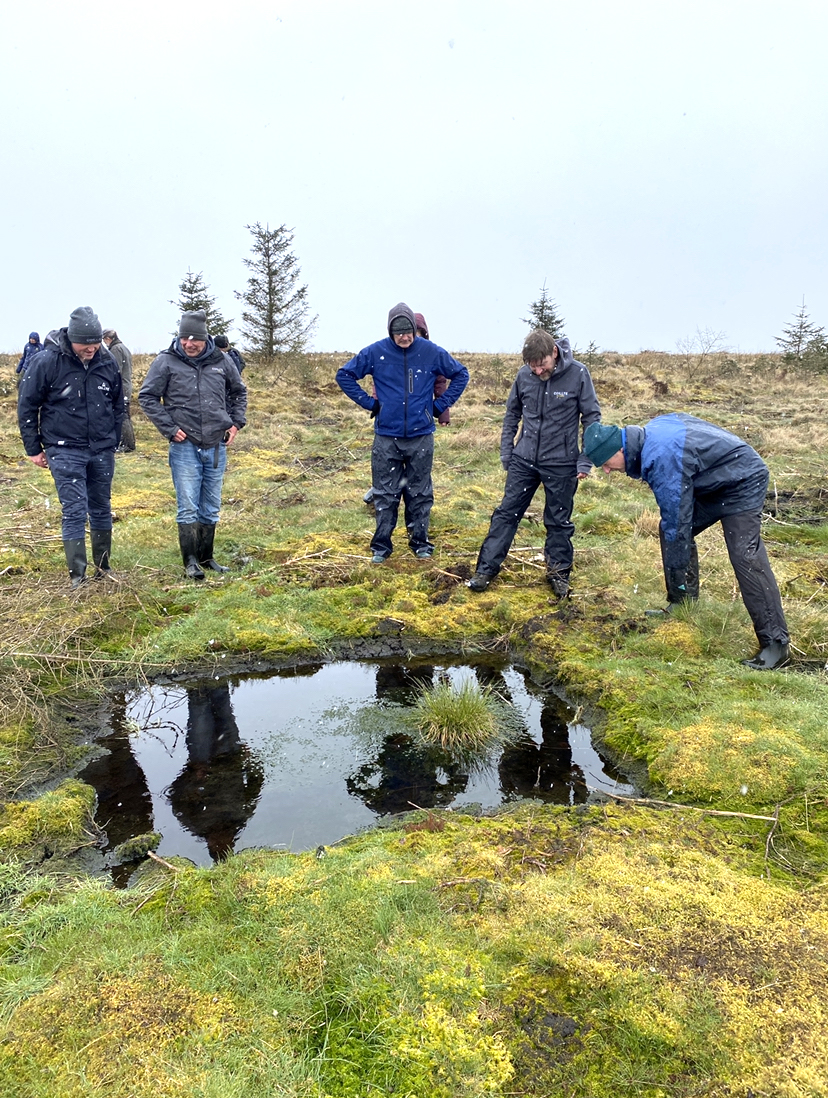
To aid this recolonisation with bog vegetation, sections of bog vegetation on the ground were lifted, put aside and place back down on the peat surface, during the ground smoothing process. Another process called ‘cell-bunding’ that they have experimented with creates a web of raised areas that reduces the flow of water off the site. The main aim is to keep as much water on site, raising the water table and creating the conditions for sphagnum mosses, the ‘bog builder’ to grow. Pools were also created in the peat to provide a space for sphagnum to start to colonise and, as we saw from their wildlife camera footage, also can become wildlife hot-spots.
Back at the CAFRE Hill Farm centre, Kevin Atcheson gave an interesting presentation to the group on research being carried out regarding supplemental water quality improvement methods that can be incorporated on forestry and bog restoration sites, as part of cross-border research by Source to Tap and the University of Ulster.
Karen Woods, Coillte Nature Operations Manager presented to the group about our own Wild Western Peatlands project which aims to rehabilitate 2,100ha (over 5,000 acres) of blanket bog in the coming years, much of which is currently afforested.
It was very interesting to see these techniques being applied, and the associated research. Next month we will be visiting ‘forest to bog’ restoration sites in the north of Scotland to gain further insight into the latest approaches being used in this type of project. We would like to give a huge thank you to Bryan Irvine at CAFRE for organising this and to all of those who shared their insights and learnings with us - we look forward to continuing this conversation!
